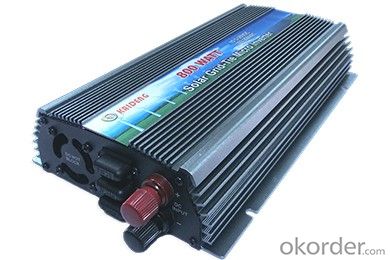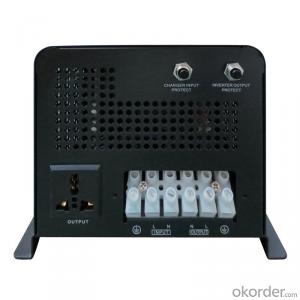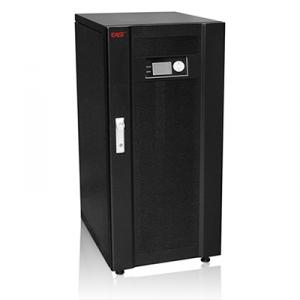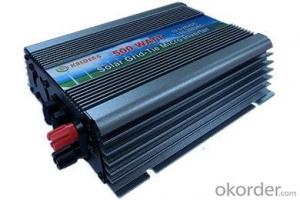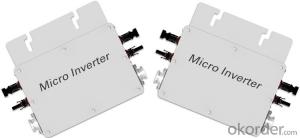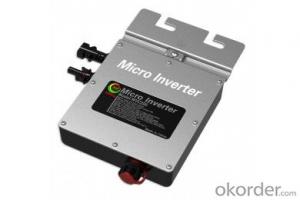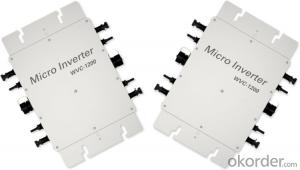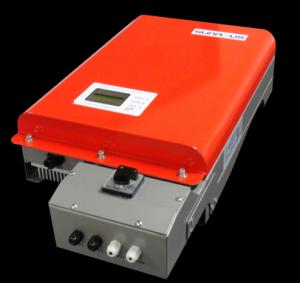Go Solar Inverter - KD-GTI800W Series Micro Inverter, Hot Sales
- Loading Port:
- China main port
- Payment Terms:
- TT OR LC
- Min Order Qty:
- 1000 pc
- Supply Capability:
- 100000 pc/month
OKorder Service Pledge
OKorder Financial Service
You Might Also Like
Structure
The transition from a centralized to a distributed inverter optimizes energy collection.
The converter module integrated into the solar panels can reduce installation costs.
Soft switch technology to replace hard-switching technology can improve efficiency and reduce heat dissipation.
From cottage industry to mass production, standardized design (hardware and software) to improve reliability and reduce costs.
Using a special capacitor (due to the high failure rate). Design requires a higher voltage to reduce the current, we use a special electrolytic capacitors.
The converter can be connected to the grid to eliminate the need for many battery applications. The high price of batteries, require maintenance, life expectancy is shorter.
Work required micro-inverter power increasingly smaller (only a few hundred watts), which can reduce the internal temperature and improve reliability.
Micro-inverter solar inverter system needs to deal with a lot of a particular power level, in order to increase production, thereby reducing costs.
DC input voltage range:10.5-28VDC
AC output voltage range:80-160VAC/180-260VAC
AC output power :750Wp
AC frequency range:50Hz/60Hz
G.W.:2.4KG
Size:394mm*209mm*117mm
KD-GTI800W Series Using IP67 waterproof streamline design, Can effectively prevent rainwater on the surface erosion, Built-in high-performance Maximum Power Point Tracking(MPPT)Function,Better able to track changes in the solar luminosity and control different output power, Effectively capture and collect sunlight. AC electric power transmission using the reverse transmission technology, Is one of our patented technology, The inverter output power can provide load priority use, Extra electricity to the grid, Efficient use of the inverter to the power emitted, Electricity transmission rate of up to 99%.
Features
Pure Sine Wave Output;
High performance Maximum Power Point Tracking(MPPT);
Power Automatically Locked(APL);
Reverse power transmission;
High-Frequency High Conversion Rate;
Anti-Islanding Protect;
Input /output is fully isolated to protect the electrical safety;
Multiple parallel stacking;
The Leading Patent Technology;
IP65 WaterProof;
Flexible Installation;
Simplify maintenance (user serviceable)
High Efficiency & Best Cost-Effectiveness
Images
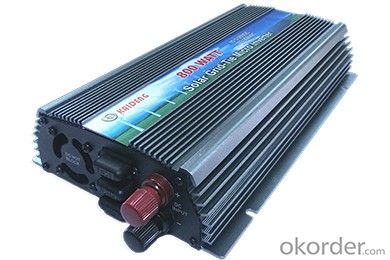

Specification
Grid-series models | 300W | 500W | 800W | 1000W |
Recommend use solar panels | 420Wp | 620Wp | 1050Wp | 1250Wp |
DC Maximum Input Power | 400W | 600W | 900W | 1200W |
DC maximum voltage | VpvDC30.2VDC | |||
DC voltage range | Vpv 10.5V~28VDC | |||
Maximum output power factor | 99% | |||
Maximum input current | 20A | 30A | 45A | 65A |
AC output power | 300W | 500W | 800W | 1000W |
AC maximum output power | 300W | 500W | 800W | 1000W |
Anti-voltage protection | Fuse | |||
AC standard voltage range | 90~160VAC/190~262VAC | |||
AC frequency range | 55Hz~63Hz/ 45Hz-53Hz | |||
THDI | <5% | |||
Phase | <1% | |||
Islanding protection | VAC;f AC | |||
Output short circuit protection | Current-limiting | |||
Show | LED | |||
Installation | Wall hanging | |||
Cooling | Fan | |||
Standby Power | <2W | |||
Night Power | <1W | |||
Ambient temperature range | -25 °C~60°C | |||
Humidity | 0~99%(Indoor Type Design) | |||
Waterproof | Indoor Type Design | |||
Electromagnetic Compatibility | EN50081.part1 EN50082.part1 | |||
Power System Disturbance | EN61000-3-2 EN60950-1 | |||
Network test | DIN VDE 1026 | |||
Certificate | CE | |||
FAQ
Can we visit your factory?
Surely, I will arrange the trip basing on your business schedule.
Can you do OEM for us?
Yes, we can.
How do you pack your products?
We have rich experience on how to pack the panels to make sure the safety on shipment when it arrives at the destination.
Can you help us install the module if we cooperate with you?
We haven’t entered into installation sector, but we have the plan in near future.
- Q: Can a solar inverter be used with dual-axis solar trackers?
- Yes, a solar inverter can be used with dual-axis solar trackers. A solar inverter is responsible for converting the direct current (DC) generated by the solar panels into alternating current (AC) that can be used to power electrical devices or be fed into the grid. The dual-axis solar trackers enable the solar panels to follow the sun's movement in both horizontal and vertical directions, maximizing their exposure to sunlight throughout the day. The solar inverter can still perform its function of converting DC to AC regardless of the type of solar tracking system used.
- Q: What is the role of a solar inverter in voltage and frequency regulation during islanding conditions?
- The solar inverter plays a crucial role in maintaining voltage and frequency regulation during islanding conditions. Islanding conditions occur when a distributed generation system, like a solar PV system, continues to supply power to a local area even when the main electrical grid is disconnected. In grid-connected mode, the solar inverter synchronizes its output voltage and frequency with the utility grid. However, during islanding conditions, it must transition into a standalone mode and take responsibility for regulating voltage and frequency within the isolated microgrid. The primary function of the solar inverter in islanding conditions is to ensure that the voltage and frequency of the generated electricity remain within acceptable limits. To achieve this, it constantly monitors the electrical parameters and adjusts its own output accordingly. To regulate voltage, the solar inverter adjusts its output voltage based on demand and the available power from the solar panels. It maintains a steady voltage level within a specified range, typically around 230-240 volts for residential applications. Equally important is frequency regulation, which ensures that the electrical devices connected to the microgrid operate at their designed frequency, usually 50 or 60 Hz. The solar inverter continuously monitors the frequency and adjusts its output to match the required frequency, minimizing fluctuations and maintaining stability. Apart from voltage and frequency regulation, the solar inverter also performs other crucial functions during islanding conditions. These include power quality control, protection against overvoltage and overcurrent, and safe disconnection in emergencies or during grid restoration. Overall, the solar inverter's role in voltage and frequency regulation during islanding conditions is critical for maintaining a stable and reliable power supply within the isolated microgrid. It ensures that the electricity generated by the solar PV system remains within acceptable parameters, enabling connected electrical devices to operate efficiently and safely.
- Q: What is the role of a solar inverter in a solar power system?
- The role of a solar inverter in a solar power system is to convert the direct current (DC) electricity produced by the solar panels into alternating current (AC) electricity that can be used to power household appliances and be fed back into the electrical grid. The inverter also ensures that the power generated by the solar panels is at the correct voltage and frequency for safe and efficient use.
- Q: Can a solar inverter be used with different types of grid connection standards?
- Yes, a solar inverter can be used with different types of grid connection standards. Solar inverters are designed to convert the direct current (DC) generated by solar panels into alternating current (AC) that can be fed into the electrical grid. They are manufactured to comply with various grid connection standards and regulations, allowing them to be compatible with different types of grids worldwide. This flexibility enables solar inverters to be used in a wide range of countries and regions with varying grid connection requirements.
- Q: Can a solar inverter be used with solar-powered electric fences?
- Yes, a solar inverter can be used with solar-powered electric fences. Solar inverters are commonly used to convert the direct current (DC) energy generated by solar panels into alternating current (AC) energy, which is suitable for powering electric fences. By connecting the solar panels to a solar inverter, the generated solar energy can be efficiently utilized to power the electric fence system.
- Q: What is the role of a solar inverter in a grid-tied system?
- The role of a solar inverter in a grid-tied system is to convert the direct current (DC) electricity generated by the solar panels into alternating current (AC) electricity that is compatible with the electrical grid. It also ensures the synchronization and stability of the solar power system with the grid, allowing excess energy to be fed back into the grid and enabling the system to draw power from the grid when needed.
- Q: What are the common fault indications in a solar inverter?
- Some common fault indications in a solar inverter include a sudden loss of power output, frequent or recurring tripping of the inverter, abnormal or fluctuating voltage readings, unusual noises or smells emanating from the inverter, error messages or fault codes displayed on the inverter's screen, and physical damage or visible signs of overheating.
- Q: Can a solar inverter be connected to a home automation system?
- Yes, a solar inverter can be connected to a home automation system. This integration allows homeowners to monitor and control their solar power generation and consumption remotely through their home automation system. It provides real-time data on energy production, allows for scheduling and optimizing energy usage, and enables the automation of various appliances and devices based on solar power availability.
- Q: Can a solar inverter be used in areas with unstable grid power?
- Yes, a solar inverter can be used in areas with unstable grid power. Solar inverters are designed to convert the DC power generated by solar panels into AC power for use in homes or businesses. In areas with unstable grid power, a solar inverter can help stabilize the electricity supply by utilizing the solar energy generated. It can operate independently or in conjunction with the grid, providing a reliable power source even during grid outages or fluctuations.
- Q: Can a solar inverter be used with concentrated photovoltaic systems?
- Yes, a solar inverter can be used with concentrated photovoltaic (CPV) systems. However, the inverter used for CPV systems may differ from the ones used for traditional photovoltaic systems. CPV systems use lenses or mirrors to concentrate sunlight onto highly efficient solar cells, which generate DC power. This DC power is converted into AC power by the inverter, enabling it to be used for various applications or fed into the grid. Therefore, a specialized inverter designed to handle the unique characteristics and high levels of DC power output of CPV systems is required.
Send your message to us
Go Solar Inverter - KD-GTI800W Series Micro Inverter, Hot Sales
- Loading Port:
- China main port
- Payment Terms:
- TT OR LC
- Min Order Qty:
- 1000 pc
- Supply Capability:
- 100000 pc/month
OKorder Service Pledge
OKorder Financial Service
Similar products
Hot products
Hot Searches
Related keywords



